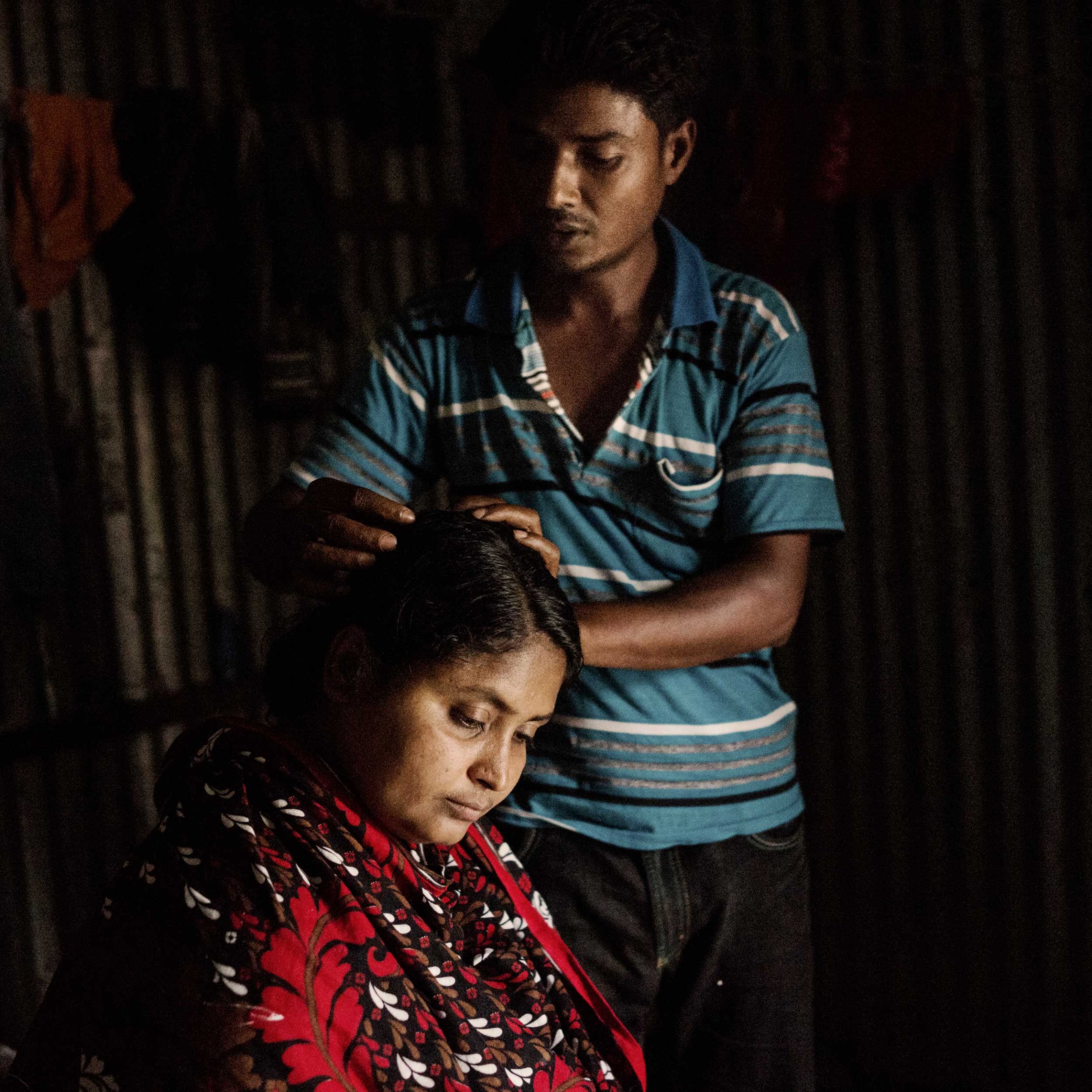
When the Rana Plaza garment factory complex in Dhaka, Bangladesh, collapsed on April 24, 2013, more than 1,100 people were killed. Images of the devastation captured the world’s attention and drew focus to conditions within that industry. But, four months later, when Bangladeshi photographer Ismail Ferdous visited New York City for a photojournalism workshop, it seemed like those hundreds of victims had been forgotten.
“Though I really love the city,” he tells TIME, “I [was traumatized] when I saw all the large, fancy store windows lined with sales and discount signs. I couldn’t help but think about the labels I saw in the rubble, the faces of the family members who had lost loved ones and the inhumane working conditions of the garment workers in Bangladesh.”
After his visit, Ferdous felt he had to do something. “I didn’t want the world to forget about Rana Plaza,” he says. With the help of filmmaker Nathan Fitch, he launched The Cost of Fashion, an advocacy project that premiered in February of 2014 during New York Fashion Week. “My images of the Rana Plaza collapse were projected onto the buildings of the Lincoln Center and on stores such as The Children’s Place, one of the many companies that still owe compensation to the victims of Rana Plaza.”
Now, Ferdous has taken to Instagram to launch a new series called After Rana Plaza. “This project came from a very personal place,” he says. “As I am based in Bangladesh, I live among the people who are affected by the garment industry. Every day on the street in front of my home, I see hundreds of garment workers going to work in the morning. [They are] a constant reminder of the collapse.”
Each day, Ferdous interviews a survivor or a family member of one of the 1,110 people who died in the 2013 collapse. Each photo is accompanied by a short audio testimony in Bengali, which is then translated in English and attached to the picture’s caption. “I also post photos from my Rana Plaza archive with statistics and facts as a way to add more context to this issue,” he says.
Ferdous chose Instagram because he wanted these stories to become an integral part of people’s everyday lives. “I believe Instagram is a useful educational tool and information source and can also engage people of varying ages, nationalities, ethnicities and socioeconomic class,” he says. “It brings issues into peoples’ back pockets.”
The project, funded in part by the Netherlands Embassy in Bangladesh, will last a year, until the next anniversary of the collapse. “Through these stories, people will realize how their lives have changed, what challenges they continue to face and what [can be done] to help in the recovery process,” Ferdous says.
Ismail Ferdous is a freelance photographer based in Dhaka, Bangladesh. Follow him on Instagram @ismailferdous.
Olivier Laurent is the editor of TIME LightBox. Follow him on Twitter and Instagram @olivierclaurent
More Must-Reads from TIME
- Cybersecurity Experts Are Sounding the Alarm on DOGE
- Meet the 2025 Women of the Year
- The Harsh Truth About Disability Inclusion
- Why Do More Young Adults Have Cancer?
- Colman Domingo Leads With Radical Love
- How to Get Better at Doing Things Alone
- Michelle Zauner Stares Down the Darkness
Contact us at letters@time.com